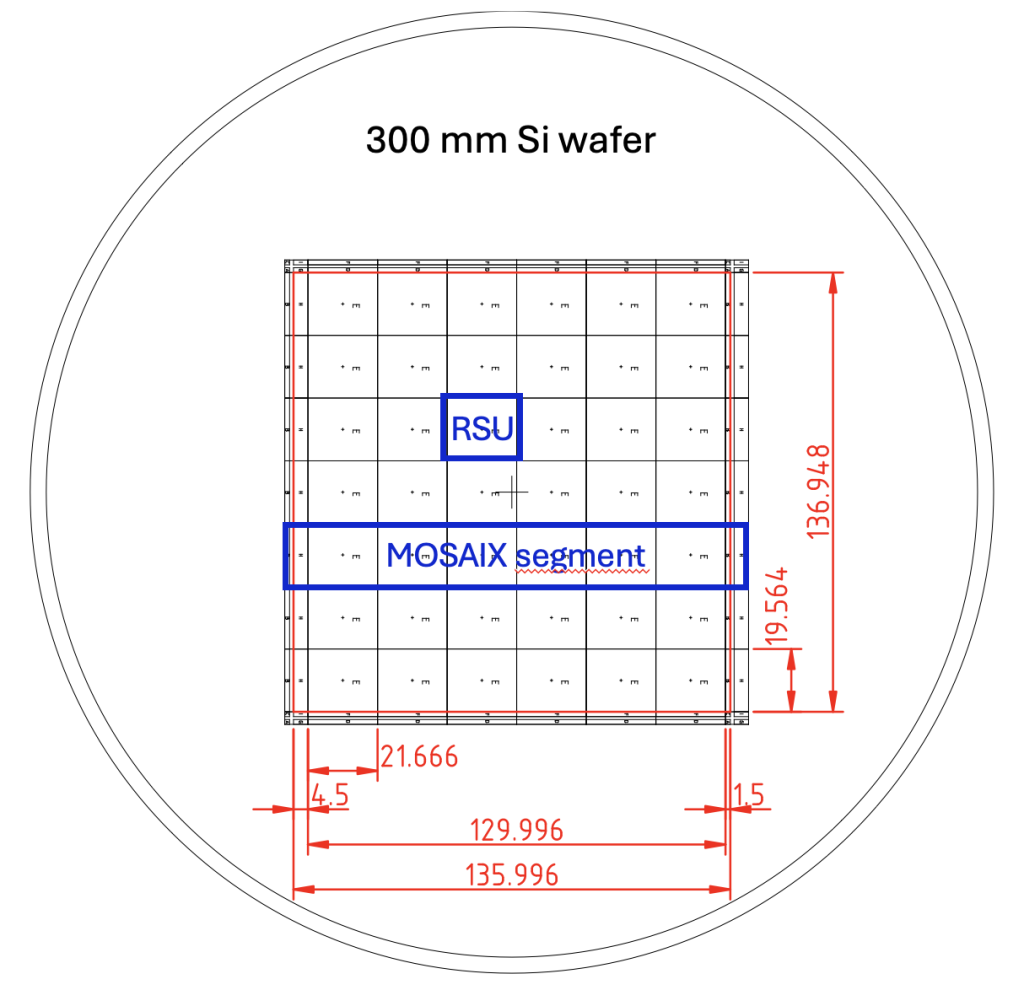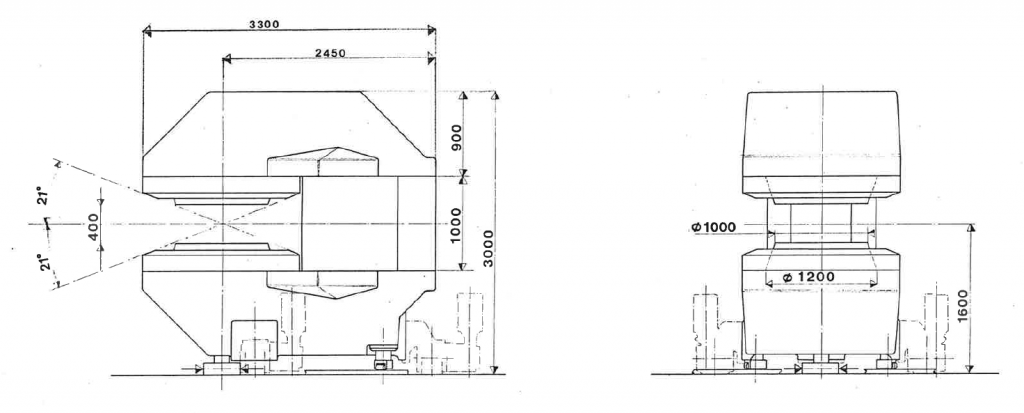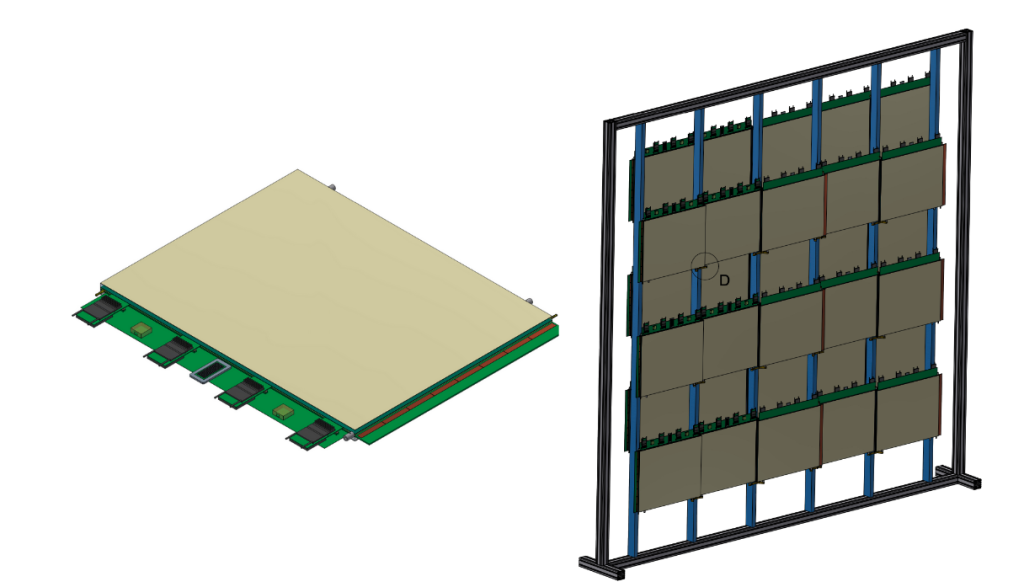More details can be found in Chapter 2.1-2.7 of the proposal
Vertex spectrometer
The vertex spectrometer will be based on MAPS sensors presently under development for the ALICE ITS3 and NA60+ projects. Large area sensors will be built, thanks to the stitching technique. On the left, the stitching plan of the NA60+/DiCE sensor on a 300 mm silicon wafer. The RSU (basic pixel matrix) and a MOSAIX segment are shown. The MOSAIX segment is replicated vertically seven times. On the right, the configuration of four pixel sensors forming an active plane, with a central 6×6 mm^2 aperture to allow passage of non-interacting Pb ions. Five planes are foreseen for the vertex spectrometer.


Vertex spectrometer magnet
The vertex spectrometer is immersed in the magnetic field generated by a dipole magnet. The MEP48 magnet, presently stored at CERN, will be used. It has a 40 cm wide gap and can deliver up to 1.47 T.

Muon spectrometer
The muon spectrometer is placed downstream of the vertex spectrometer, after a thick absorber that efficiently filters out the hadrons produced in the primary interaction. It includes six tracking stations. Groups of two stations are positioned upstream and downstream of the MNP33 dipole magnet (see below), while the last two stations are placed downstream of a further hadron absorber, that helps in rejecting the remaining hadronic background. A modular design is foreseen.

The MWPC technology was chosen for the realization of the muon spectrometer. The use of MPGD detectors is also considered for the most upstream tracking station, where largest particle rates (several kHz/cm2) are foreseen.
Prototypes of MWPC modules were built and tested at the CERN SPS in 2023/2024.


Muon spectrometer magnet
The MNP33 dipole magnet, in use by the NA62 experiment until 2026, was chosen for the muon spectrometer. It has an integrated strength of 0.9 Tm and a large gap of ~240 x 240 cm^2.

